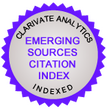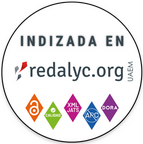COMPUTER SIMULATED PROCESS ANALYSIS: A PROPOSED TEACHING STRATEGY FOR BUSINESS ADMINISTRATION DEGREES
DOI:
https://doi.org/10.13058/raep.2012.v13n3.87Keywords:
teaching simulation in management, process analysis, discrete event simulationAbstract
Considering the importance of the use of discrete event simulation to analyze and improve existing processes within organizations, this paper discusses the teaching of this technique in undergraduate business administration courses. The paper outlines a teaching strategy where the emphasis lies on understanding and analyzing the process to be simulated in contrast to existing approaches that focus on knowing the routines and particularities of simulation software. The proposed approach is based on the works of Laguna and Marklund (2004) and Hartvigsen (2005). The simulation is carried out using spreadsheets and the SimQuick software package. This strategy consists of four steps. The first step comprises identifying opportunities and defining the scope of work, the second step aims at a detailed description of the process to be analyzed, the third step consists of the process evaluation through computer simulation, and finally, the last step encompasses the redesign proposal. A case modeling conducted by a group of students is presented here as a teaching resource to clarify and demonstrate the proposed teaching strategy.Downloads
Downloads
Published
How to Cite
Issue
Section
License
By publishing a manuscript in the journal Administração: Ensino e Pesquisa (RAEP), the authors declare that the work is of their exclusive authorship and therefore assume full responsibility for its content. The authors grant RAEP a non-exclusive rights license to use the work in the following ways:
(1) Sell and / or distribute the work in hard copies or electronic format.
(2) Distribute parts of the work as a whole to promote the journal through the internet and other digital and printed media.
(3) Record and reproduce the work in any format, including digital media.
Authors and readers are permitted to share the material, use it in classes, for presentations and also for other purposes, and to create new knowledge based on any RAEP publication, as long as the due credit is attributed to the original work and the respective author(s), through citations, references, and other means.
The journal adopts preventive measures to identify plagiarism using software designed for this purpose.
RAEP does not charge authors for the article submission nor for the publishing of approved articles.
In line with the journal's policies, each published article will be given a Creative Commons CC-BY 4.0 license.










